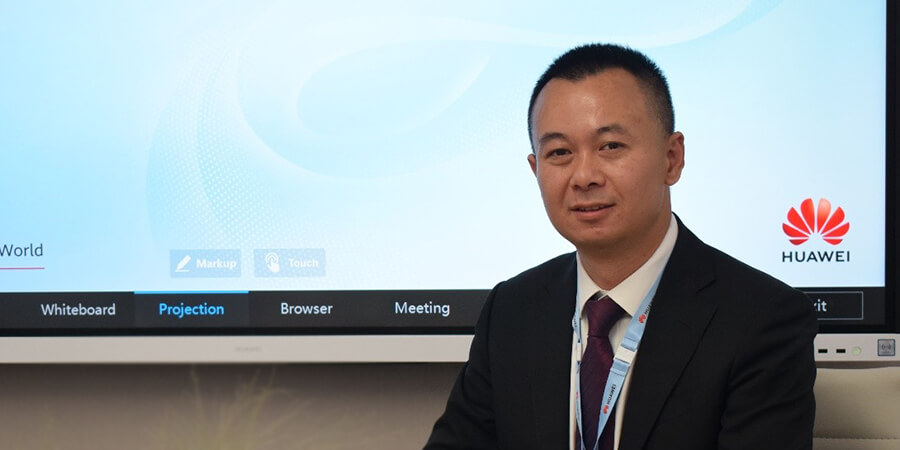During an exclusive interview with Telecom Review at MWC24, James Zeng, President of Huawei’s Microwave Product Line, shared insights into the fundamentals of 5.5G connectivity and Huawei’s pivotal role in its implementation. With extensive expertise in the microwave industry and wireless architecture, Zeng elaborated on the technological advancements driving the evolution of 5.5G backhaul.
In 2024, the telecommunications industry witnessed the introduction of 5.5G, marking a significant leap from its predecessor, 5G. Among the many discussions around this technological evolution, one question that beckons to be answered is: What sets 5.5G apart from its forerunner, particularly in terms of backhaul infrastructure, and what new challenges has it introduced?
Enhancing Spectrum Efficiency and Flexibility Evolution with Optimal TCO
It is widely known that 5.5G demands an unprecedented surge in capacity, and it necessitates the adoption of new technologies aimed at enhancing spectrum efficiency and simplified architecture to accommodate larger bandwidths.
In urban areas, E-band microwave (80 GHz) features rich frequency band resources and huge transmission capacity, helping operators cope with large-capacity backhaul services in the 5G era. Therefore, to meet the communication requirements of core areas, high-frequency microwave is usually used as the main transmission solution for large-capacity aggregation links. E-Band’s high bandwidth and low spectrum cost is ideal for 5.5G backhaul evolution, which allows maximum channel spacing (CS) of 2 GHz and enables 10 Gbps backhaul per carrier.
“Since 5.5G needs a larger bandwidth, during MWC 2024, Huawei introduces a solution that can support a 50Gbps rate in urban areas with the industry-only innovated technology, enabling double spectral efficiency on one E-band frequency. Obtaining larger capacity by using fewer spectrums, more available spectrum resources can be saved.
Furthermore, the global landscape of wireless network development exhibits significant variation. Regions like China and the Middle East have surged ahead in 5G deployments, whereas others such as Latin America, Africa, and the Asia Pacific are still catching up, with either 4G or initial phases of 5G networks. In terms of network construction efficiency and TCO, traditional solutions have high OPEX, spectrum fees, tower leasing, and delivery bottlenecks.
“As we deploy wireless backhaul technologies, it is important for us to bear in mind network evolution so that carriers can smoothly evolve to 5.5G networks and ensure the flexibility of the evolution to protect the investment. In suburban areas with less fiber penetration, Huawei’s new LR SDB solution combines common-band (6–42 GHz) and E-band (71–76/81–86 GHz), to provide reliable, high-bandwidth microwave transmission over long distances, saving up to 30% in TCO. In addition, in terms of the backbone, 2T CA RFU solution allows 75% cost savings on hardware thereby slashing tower rent by 50%, so that carriers do not have to bear with increased OPEX and TCO and yet they can enjoy a higher bandwidth,” explained Zeng.
“We also know that carriers may face difficulties in microwave installation and delivery. According to statistics, microwave delivery could be in days in some cases, which is long and costly, most of that is spent on antenna alignment, especially in long-distance scenarios, where large-diameter antennas are used. As a company with end-to-end innovation capabilities, Huawei offers many innovations in microwave commissioning and delivery. With new tools, algorithms and software, we are able to help improve delivery efficiency, which can reduce the alignment time significantly, and the delivery can be easily completed within 1 day,” said Zeng.
Optimizing Sustainable Operations
Acknowledging the increasing focus on sustainability, energy efficiency, and green networks at MWC 2024, Zeng highlighted Huawei's commitment to addressing these priorities. He emphasized that Huawei not only provides reliable hardware (a key concern for carriers and the industry as a whole) but also offers innovation in materials, techniques, hardware design, and software to enhance energy utilization efficiency.
This concerted effort has led to a significant improvement in energy efficiency in network operations, which can achieve around 25% to 40% power saving, underscoring the company's unwavering dedication to technological advancement and environmental stewardship.
In Conclusion
To meet the demands and leverage 5.5G ultra-high speed and ultra low-latency capacity, Huawei has continued to invest in innovation in materials, production processes, hardware design and root technologies and ICT talent enhancement. 
During MWC Barcelona 2024, Huawei’s SuperHub solution won the GSMA GLOMO "Best Mobile Innovation for Emerging Markets" award for its ability to enhance spectral efficiency of microwave spectrum. The SuperHub solution allows microwave spectrum to be reused across multiple links with a separation as low as 15 degrees improving spectrum utilization and resulting in substantial increase in link capacity. This is the first time that microwave technology has won this award. It indicates that Huawei microwave product performance and innovative features have been highly recognized by the industry.
With the diverse use cases as a result of the advancement in emerging technologies such as AI, IoT, Cloud and edge computing into the ICT ecosystem, the focus on improving both the performance and the spectral efficiency of networks to deliver a superior 5G user experience remains an ongoing challenge. Furthermore, in the absence of a reliably working backhaul infrastructure, no wireless network can deliver the optimal results. Huawei’s long expertise in wireless backhaul solutions is poised to provide a solid foundation to withstand the challenges of a dynamic backhaul architecture.










